Are you seeing the overdrive light on your car’s dashboard flashing? This is not a good sign, and it usually means there is something wrong with your transmission. Don’t panic, though, as there are some simple steps on how to fix overdrive light flashing.
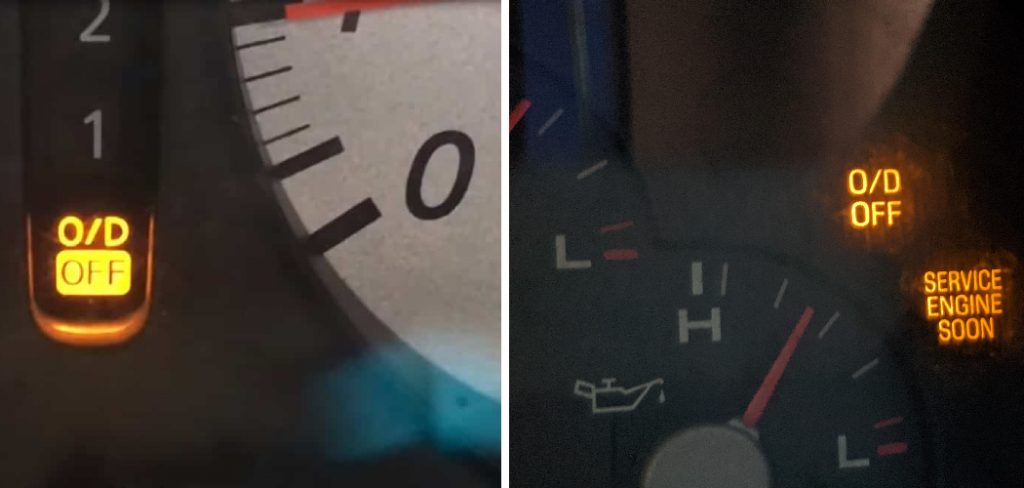
When the overdrive light on your vehicle’s dashboard starts flashing, it can signal underlying transmission issues that need immediate attention. This guide is designed to walk you through the diagnostic steps and potential fixes for addressing a flashing overdrive light.
By understanding the common causes and learning how to troubleshoot this warning sign, you can take proactive measures to prevent further damage to your vehicle’s transmission system.
Whether you’re a seasoned mechanic or a car enthusiast with basic knowledge, this guide aims to provide valuable insights to help you resolve the issue effectively.
What are the Causes of Overdrive Light Flashing?
The overdrive light flashing indicates that the transmission control system has detected a problem. There are various reasons why this could be happening, and some of the common causes include:
- Low fluid levels or dirty transmission fluid
- A faulty solenoid or sensor
- Electrical issues
- Mechanical problems with the transmission itself
It is essential to address the root cause of the problem rather than just resetting the warning light. Ignoring the issue could lead to more significant and costly repairs in the future.
What Will You Need?
Before diving into the steps on how to fix overdrive light flashing, here are some tools and equipment you may need:
- Obd-ii Scanner: This diagnostic tool is used to retrieve error codes from your vehicle’s computer. It will help you identify the root cause of the issue.
- Socket Set: You’ll need this to remove and reinstall any parts that may need to be replaced.
- Service Manual: This will provide you with specific instructions on how to troubleshoot and fix the overdrive light flashing issue for your particular vehicle’s make and model.
- Transmission Fluid: This may be required if low transmission fluid levels are the cause of the problem.
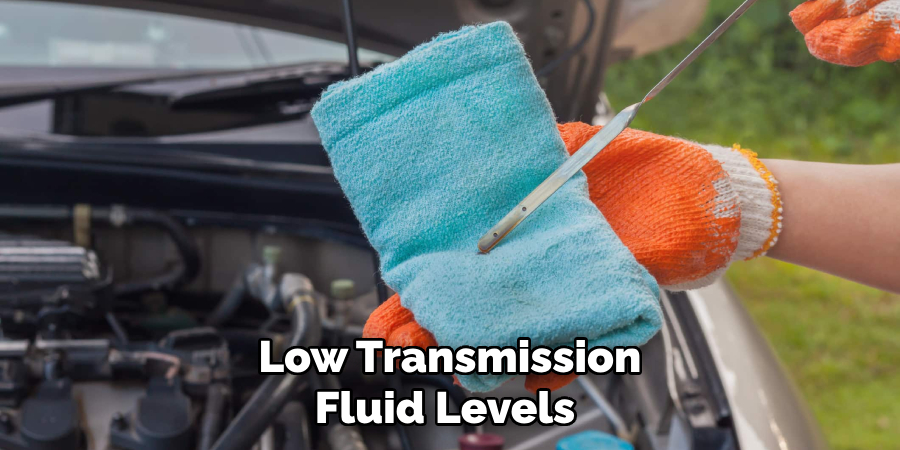
Once you have these tools ready, let’s move on to the steps for fixing overdrive light flashing.
10 Easy Steps on How to Fix Overdrive Light Flashing
Step 1: Check for Error Codes
The first thing you should do when you see the overdrive light flashing is to use an OBD-II scanner to check for any error codes. These codes can provide valuable insights into what might be causing the problem.
To do this, connect the scanner to your vehicle’s OBD-II port, usually underneath the dashboard. Turn on the ignition to the “on” position, but do not start the engine. Follow the scanner’s instructions to retrieve the codes.
Once you have these codes, refer to your vehicle’s service manual or an online database to interpret their meaning. This step could lead you directly to the root cause of the flashing overdrive light, substantially simplifying the troubleshooting process.
Step 2: Inspect the Transmission Fluid
One of the first and simplest checks to perform is inspecting your vehicle’s transmission fluid. Start by locating the transmission fluid dipstick, typically found in the engine bay.
Remove the dipstick and wipe it clean with a rag with the vehicle parked on a level surface. Reinsert it fully and then remove it again to check the fluid level and condition. The fluid should be at the appropriate level marked on the dipstick and have a pink or red color.
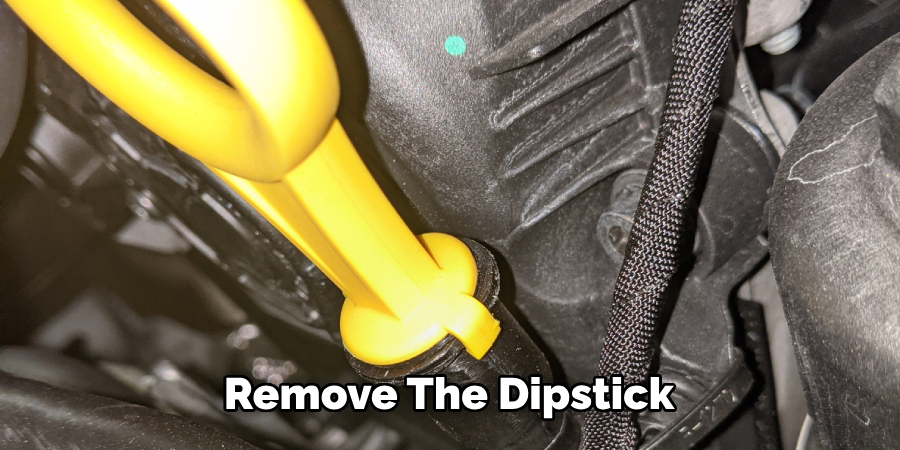
If it’s dark, smells burnt, or the level is low, it could indicate it’s time to change or top up the fluid. Remember, using the correct type of transmission fluid, as your vehicle’s manufacturer recommends, is crucial for maintaining a healthy transmission system.
Step 3: Replace or Top Up Transmission Fluid
If, during your inspection in Step 2, you discover that the transmission fluid is low or dirty, the next step is to either top it up or replace it entirely. To top up the fluid, simply add the appropriate type of transmission fluid through the dipstick tube until it reaches the correct level.
A complete fluid change is advisable if the fluid is dirty or smells burnt. This process may vary based on your vehicle model, so consult your service manual for the correct procedure. Changing the transmission fluid can sometimes resolve the issue if the overdrive light flashing is due to dirty or insufficient fluid, causing the transmission to overheat or malfunction.
Step 4: Check the Transmission Solenoid
Transmission solenoids control the flow of transmission fluid in and out of the transmission.

A malfunctioning solenoid can result in the overdrive light flashing due to irregular fluid flow. Begin using your OBD-II scanner to see if any error codes relating to the transmission solenoid are present. If so, locate the solenoid(s) in your vehicle (this information can be found in your service manual). Once located, check for any visible damage or loose connections.
If you’re comfortable with further diagnostics, a multimeter can be used to test the solenoid’s resistance against the specifications found in your service manual. Damaged or faulty solenoids should be replaced with ones that match your vehicle’s specifications.
Step 5: Inspect and Clean Electrical Connections
Electrical issues can cause the overdrive light to flash by disrupting the transmission control system’s communication. To address this, inspect all transmission-related electrical connections to the transmission solenoid, sensors, and the transmission control module (TCM). Look for any signs of corrosion, loose connections, or damaged wires.
Disconnect the connectors and clean them with electrical contact cleaner to ensure a good connection. Reconnect everything securely and check to see if the issue is resolved. In cases where wires are damaged, they may need to be repaired or replaced. Be sure to consult your vehicle’s service manual to locate and identify these connections.
Step 6: Test or Replace the Transmission Sensor
Transmission sensors, such as the speed and temperature sensors, play a crucial role in your vehicle’s transmission system. A faulty sensor can cause the overdrive light to flash by sending incorrect signals to the transmission control module (TCM). Begin by consulting your OBD-II scanner for any error codes related to transmission sensors. Refer to your service manual for the location of these sensors and instructions on how to test them.

Typically, testing involves using a multimeter to check the sensor’s resistance and comparing it with the standard values specified in your manual. If a sensor is found to be faulty, replace it with a new one that matches your vehicle’s specifications. After replacing any faulty sensors, clear any error codes using your OBD-II scanner and observe if the overdrive light issue is resolved.
Step 7: Examine the Overdrive Button or Switch
The overdrive button or switch malfunctioning could also lead to the flashing of the overdrive light. This button or switch activates the overdrive mode, often located on the shift lever or dashboard. Begin by visually inspecting the button or switch for any physical damage or wear. Check for a firm, responsive press without any sticking. If accessible, inspect the wiring connected to the switch for any signs of damage or loose connections.
Consult your vehicle’s service manual for specific testing procedures, which may involve using a multimeter to check for continuity. Suppose the overdrive button or switch is found to be faulty. In that case, replacing it with the correct part for your make and model is necessary to ensure the proper functionality of the overdrive system.
Step 8: Consult a Professional Mechanic
If you have completed the previous steps and the overdrive light continues to flash, it may be time to consult a professional mechanic for further diagnosis. Complex transmission issues or undetectable faults within the transmission system may require specialized tools and knowledge to identify and repair.
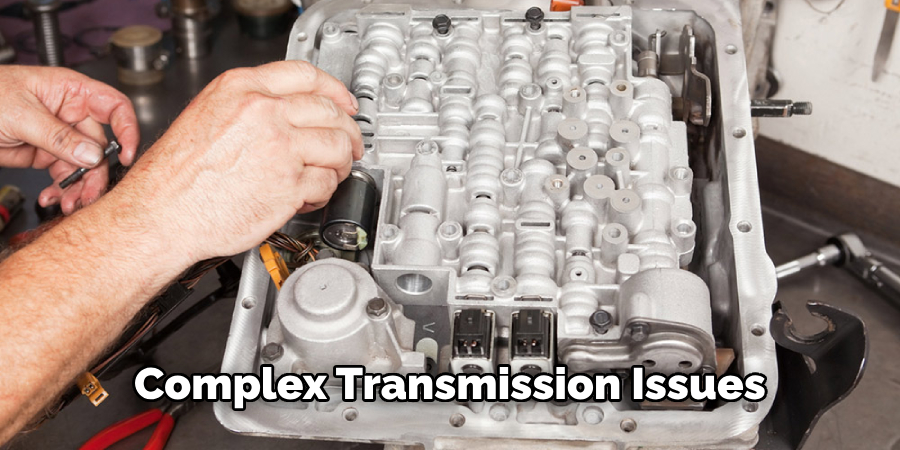
Professional mechanics can perform in-depth diagnostics, including a comprehensive check of the transmission system, and use their expertise to solve problems that are not easily resolved at home. Remember, addressing transmission problems early can prevent more serious and costly repairs down the line, so it’s wise to seek professional advice if you need clarification on any steps in the troubleshooting process.
Step 9: Regular Transmission Maintenance
Regular maintenance of your vehicle’s transmission system is essential to prevent future issues with the overdrive light flashing. This includes checking the transmission fluid level and condition periodically and following your vehicle manufacturer’s recommendations for changing the transmission fluid.
Additionally, keeping an eye on the transmission’s overall performance and addressing any unusual changes immediately can help avoid major repairs. Remember, proactive maintenance is key to extending the life of your vehicle’s transmission and ensuring smooth and efficient operation. Always refer to your vehicle’s service manual for specific maintenance schedules and procedures.
Step 10: Monitor Vehicle Performance After Repair
Once all necessary repairs or maintenance have been completed, it’s crucial to closely monitor your vehicle’s performance to ensure that the issue with the overdrive light flashing has been resolved. Pay special attention to the smoothness of shifts, the responsiveness of the transmission during acceleration, and any unusual sounds during operation.
It’s also wise to use an OBD-II scanner periodically to check for any error codes that might suggest unresolved issues. Remember, early detection of potential problems can save time and money by preventing further damage to the transmission system. Always keep detailed records of all maintenance and repairs performed on your vehicle to assist with future troubleshooting and to maintain a comprehensive history of your vehicle’s care.
By following these steps and staying on top of regular maintenance, you can solve the issue with your overdrive light flashing and ensure the optimal performance and longevity of your vehicle’s transmission system.
5 Additional Tips and Tricks
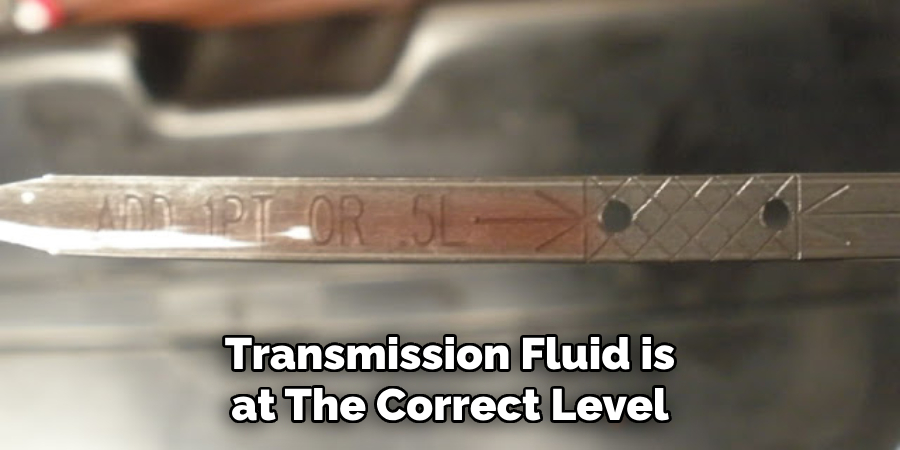
- Check the Transmission Fluid Level and Quality: Insufficient or deteriorated transmission fluid can lead to overdrive light flashing. Ensure the transmission fluid is at the correct level and replace it if it has become dirty or smells burnt.
- Inspect the Overdrive Button/Switch: Sometimes, the issue could stem from a faulty overdrive button or switch. Check for any damage or connectivity issues, and consider replacing the switch if it’s not functioning properly.
- Scan for Diagnostic Trouble Codes (DTCs): Utilize an OBD-II scanner to check for any diagnostic trouble codes that could indicate specific issues with the transmission system. This can help pinpoint more complex problems that are causing the overdrive light to flash.
- Evaluate the Transmission Solenoid: The transmission solenoid controls fluid flow through the transmission and can cause the overdrive light to flash if it is not operating correctly. Have the solenoid inspected and replaced if necessary.
- Check for Loose or Damaged Wiring and Connections: Faulty wiring or loose connections can also trigger the overdrive light to flash. Carefully inspect all wiring and connections related to the transmission system and repair or replace any damaged components.
With these additional tips and tricks, you can further troubleshoot and address the issue of overdrive light flashing.
5 Things You Should Avoid
- Ignoring the Warning Signs: Neglecting the overdrive light when it first starts flashing can lead to more severe transmission problems. It’s crucial to notice this warning signal, as doing so could result in costly repairs.
- DIY Complex Repairs Without Expertise: While some may be tempted to address transmission issues independently, complex repairs should be left to professionals. Without proper knowledge and tools, you might exacerbate the problem.
- Using Generic OBD-II Scanners Only: Relying solely on generic OBD-II scanners to diagnose issues can be insufficient. These devices may not capture manufacturer-specific codes. It’s advisable to consult a professional with access to advanced diagnostics tools.
- Skipping Regular Maintenance: Avoid skipping routine transmission fluid checks and changes. Regular maintenance is key to preventing transmission issues, including an overdrive light that flashes.
- Overlooking Other Transmission Components: Focusing solely on the overdrive mechanism without considering other transmission components can be a misstep. Issues like worn clutches or damaged gears can also cause the overdrive light to flash and should be addressed.
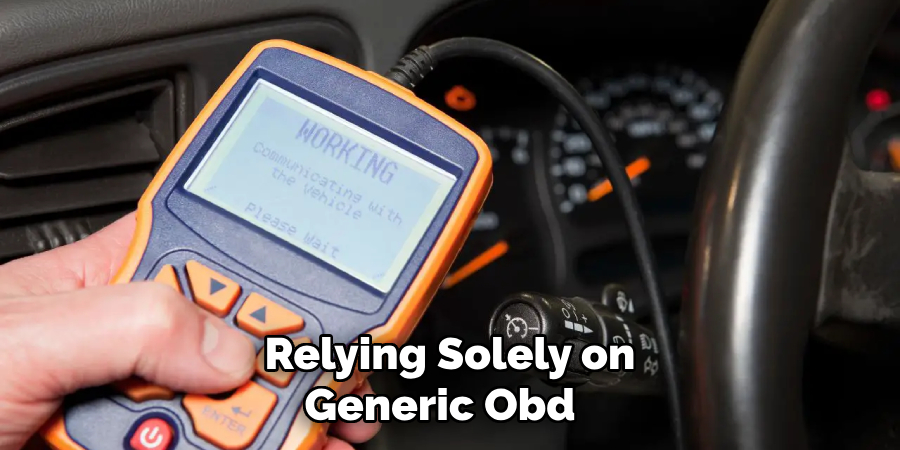
By avoiding these mistakes and taking proper care of your vehicle’s transmission system, you can prevent the overdrive light from flashing and ensure a smooth driving experience.
Is It Okay to Drive With Overdrive All the Time?
Driving with overdrive on all the time may not necessarily cause any harm to your vehicle, but it is not recommended. Overdrive is designed for use at higher speeds to help improve fuel efficiency and reduce engine strain. Using it constantly while driving at lower speeds can result in decreased performance and possibly damage to the transmission over time.
It’s important to pay attention to the road and traffic conditions while driving and use overdrive accordingly. For example, if you are constantly stopping and starting in heavy traffic, turning off overdrive may be more beneficial to prevent excessive gear shifting.
Ultimately, the best practice is to follow the recommendations of your vehicle’s manufacturer regarding when to use overdrive. This will ensure optimal performance and longevity of your transmission system.
Does Overdrive Affect Speed?
Yes, overdrive does affect speed. When engaged, overdrive allows the transmission to shift into a higher gear, resulting in increased speed at lower engine RPMs. This helps improve fuel efficiency and reduce strain on the engine.
However, it’s essential to use overdrive appropriately and not rely on it solely for increasing speed. Continuously driving at high speeds with overdrive-on can lead to overheating and damage to the transmission.
It’s also worth noting that overdrive is not a substitute for proper gear selection. For example, when driving up a steep hill, it may be necessary to turn off overdrive and downshift into a lower gear to maintain speed and prevent strain on the engine.
When Should You Turn Off Overdrive?
There are a few situations where it may be necessary to turn off overdrive:
- Towing or Hauling Heavy Loads: When towing a trailer or hauling heavy loads, turning off overdrive is recommended. This will prevent excessive strain on the transmission and help maintain vehicle control.
- Driving in Hilly or Mountainous Terrain: When driving in areas with steep inclines and declines, it may be beneficial to turn off overdrive. This will allow the transmission to maintain a lower gear and provide better vehicle control.
- Driving in Snow or Slippery Conditions: In slippery road conditions, it’s best to turn off overdrive to prevent excessive gear shifting and help maintain traction on the road.
Overall, it’s important to use overdrive according to the specific driving conditions and not rely on it as a default setting. Consult your vehicle’s manual for recommendations on when to turn off overdrive for optimal performance.
Conclusion
In conclusion, addressing a flashing overdrive light involves a comprehensive approach that includes checking for diagnostic trouble codes, inspecting the transmission solenoid, and ensuring all wiring and connections are intact. It’s also crucial to avoid common pitfalls such as neglecting early warning signs, attempting complex repairs without the necessary expertise, and overlooking regular maintenance.
Understanding when and how to use overdrive correctly can prevent issues and extend the life of your vehicle’s transmission system. Should you encounter persistent problems, consulting with a professional mechanic is advisable to avoid further damage and ensure your vehicle remains in optimal condition.
Following these guidelines on how to fix overdrive light flashing will help keep your transmission running smoothly and your overdrive light functioning as expected.

Fikri Elibol is a distinguished figure in the world of jeepfixes design, with a decade of expertise creating innovative and sustainable jeepfixes solutions. His professional focus lies in merging traditional craftsmanship with modern manufacturing techniques, fostering designs that are both practical and environmentally conscious. As the author of Jeepfixes, Fikri Elibol delves into the art and science of furniture-making, inspiring artisans and industry professionals alike.
Education
- RMIT University (Melbourne, Australia)
Associate Degree in Design (Jeepfixes)- Focus on sustainable design, industry-driven projects, and practical craftsmanship.
- Gained hands-on experience with traditional and digital manufacturing tools, such as CAD and CNC software.
- Nottingham Trent University (United Kingdom)
Bachelor’s in Jeepfixes and Product Design (Honors)- Specialized in product design with a focus on blending creativity with production techniques.
- Participated in industry projects, working with companies like John Lewis and Vitsoe to gain real-world insights.
Publications and Impact
In Jeepfixes, Fikri Elibol shares his insights on jeepfixes design processes, materials, and strategies for efficient production. His writing bridges the gap between artisan knowledge and modern industry needs, making it a must-read for both budding designers and seasoned professionals.
